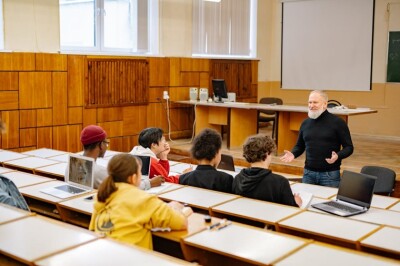Demand for drone education and pilot training across multiple industries continues to climb, as new job opportunities follow the increased adoption of drones as a tool for everything from construction to graffiti removal. This demand has also spurred the incorporation of drone pilot education into higher learning.
Every year, more universities, community colleges, and specialized institutions are recognizing the importance of drone technology, offering a range of programs that cater to different levels of expertise and areas of interest. These courses may range from comprehensive certification programs designed to help future pilots obtain their FAA Part 107 license, to more niche courses focusing on specialized skills such as aerial cinematography, surveying, and mapping.
A testament to the growing importance of drone education is events like the University Roundtable held at Commercial UAV Expo. This gathering offered a rare chance for instructors and students involved in drone programs to connect, share insights, and build a network. Led by Jay Seidel, of Fullerton College (home to a leading higher education drone program), the session invited faculty, program managers, and students to participate, network and get involved in discussions with their colleagues.
After the entire room of 30-40 people introduced themselves (with business cards and contact details flurrying around after each introduction), the group broke off into smaller groups to talk about specific topics. The camaraderie was evident as attendees swapped success stories, challenges, and strategies for growth.
One of the key areas of focus was student recruitment and retention, a challenge for many drone education programs as there is still not broad awareness of their commercial applications. Other discussions centered on curriculum development, where educators shared how they balanced technical training with the constraints of where their students were allowed to fly.
Legal and insurance considerations were also major topics, as institutions need to navigate regulations surrounding drone use, particularly as drone operations become more advanced and complex. Safety protocols, especially in light of potential risks associated with flying in urban or populated areas (where many college campuses are located), were a significant topic, with educators discussing best practices for ensuring safe operations in both training and real-world environments.
While the field of drone education is growing rapidly, there are still hurdles to overcome. Many educators are working to develop broader curricula that can meet the needs of a wide variety of industries. Moreover, aligning drone courses with other programs at a university can be challenging, with some noting that their course was filed under strange or mismatched categories or departments because the administrators simply didn’t understand where they should fit.
This event underscored the need for more collaboration among educators, students, and industry professionals. By comparing notes and brainstorming solutions, participants hoped to further improve their programs, ensuring that graduates are equipped with not only the technical skills but also the industry knowledge and adaptability necessary to thrive in the fast-changing world of drone technology. Events like the University Roundtable provide valuable opportunities for educators and students alike to network, share experiences, and collaborate on best practices, further propelling the drone pilot workforce.
















Comments